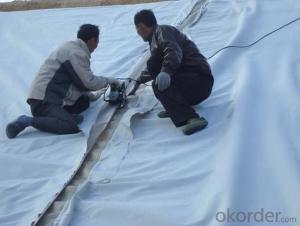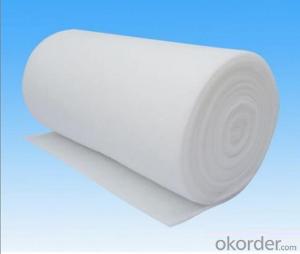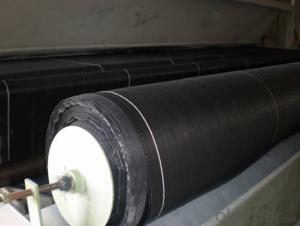High Strength PP Non-woven Geotextile for River Bank Protection
- Loading Port:
- Qingdao
- Payment Terms:
- TT or LC
- Min Order Qty:
- 20000 m²
- Supply Capability:
- 1500000 m²/month
OKorder Service Pledge
OKorder Financial Service
You Might Also Like
1. Description of High Strength Nonwoven Geotextile
CMAX polypropylene non woven geotextile is made from high strength polypropylene short fiber by non woven needle punched manufacturing process. It has separation, filtration, drainage, reinforcement, protection and maintenance etc. function
2. Specification of High Strength Nonwoven Geotextile
Weight: 100gsm – 1200gsm;
Material: 100% polypropylene
Width: 1m – 6m; Length: as clients’ required.
Color:black, white,beige, green
3. Technical Data Sheet of High Strength nonwoven geotextile
Item | Unit | Index | ||||||||
Weight per Square Meter | g/m2 | 100 | 200 | 300 | 400 | 500 | 600 | 800 | 1000 | |
Grab | MD | N | ≥350 | ≥700 | ≥1100 | ≥1400 | ≥1800 | ≥2200 | ≥2800 | ≥3400 |
CD | ≥350 | ≥700 | ≥1100 | ≥1400 | ≥1800 | ≥2200 | ≥2800 | ≥3400 | ||
Elongation | MD | % | 50~90 | 50~100 | ||||||
CD | 50~90 | 50~100 | ||||||||
Trapezoidal Tearing Strength | MD | N | ≥135 | ≥280 | ≥350 | ≥400 | ≥480 | ≥550 | ≥650 | ≥750 |
CD | ≥135 | ≥280 | ≥350 | ≥400 | ≥480 | ≥550 | ≥650 | ≥750 | ||
CBR Mullen Burst Strength KN | KN | ≥1.0 | ≥2.1 | ≥3.2 | ≥3.8 | ≥4.5 | ≥5.5 | ≥6.5 | ≥7.5 | |
Tearing Strength | MD | KN | ≥3.5 | ≥8 | ≥12 | ≥18 | ≥24 | ≥30 | ≥40 | ≥50 |
CD | ≥3.5 | ≥8 | ≥12 | ≥18 | ≥24 | ≥30 | ≥40 | ≥50 | ||
Break Strength | MD | % | 40~65 | 50~80 | ||||||
CD | 40~65 | 50~80 | ||||||||
Puncturing Strength | N | ≥180 | ≥360 | ≥550 | ≥750 | ≥900 | ≥1150 | ≥1450 | ≥2000 | |
Peeling Strength | N/5 cm | ≥80 | ≥100 | |||||||
Antiacid alkali-resistant | % | ≥90% | ||||||||
Seive Size O90 | Mm | ≤0.1 | ||||||||
Vertical Permeability | Cm/s | ≤0.2 | ||||||||
4. Property of High Strength Nonwoven Geotextile
1).The mechanical values are 2-3 times more than ordinary products.
2).Good acid and alkali resistance, excellent hot melting adhesiveness, high anti-abrasion performance.
5. Application of High Strength Nonwoven Geotextile
1) Filtration of soils in drainage applications by retaining soil particles while allowing for the free flow of water.
2) Separation and stabilization in road and railway constructions.
3) Prevention of soil movement in erosion control measures.
4) Cushioning and protection in many containment projects
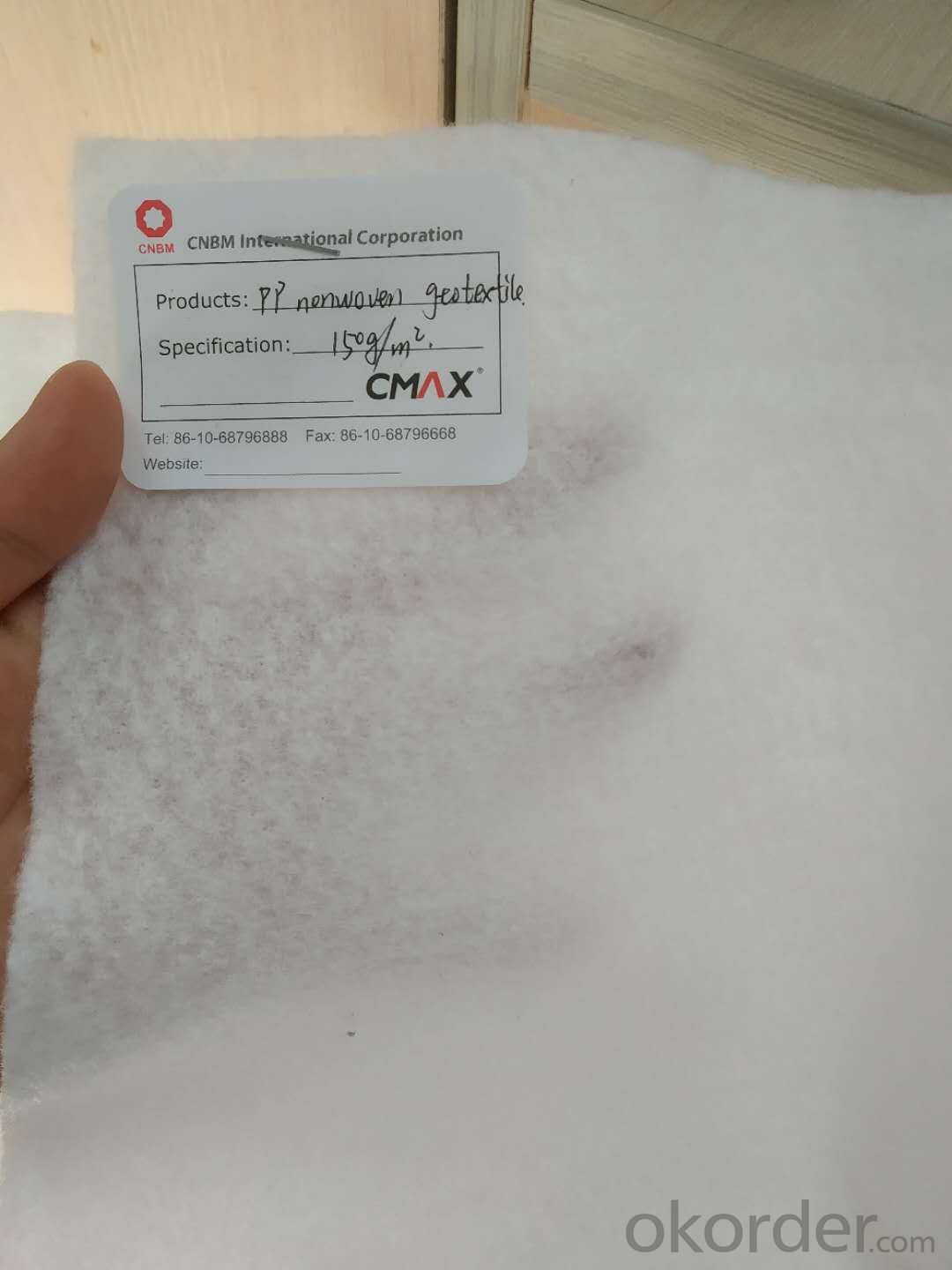

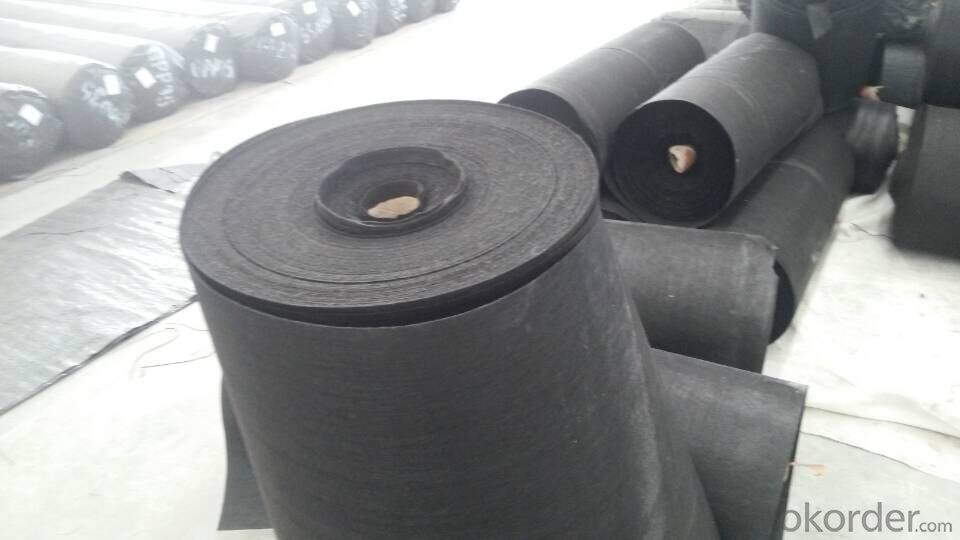
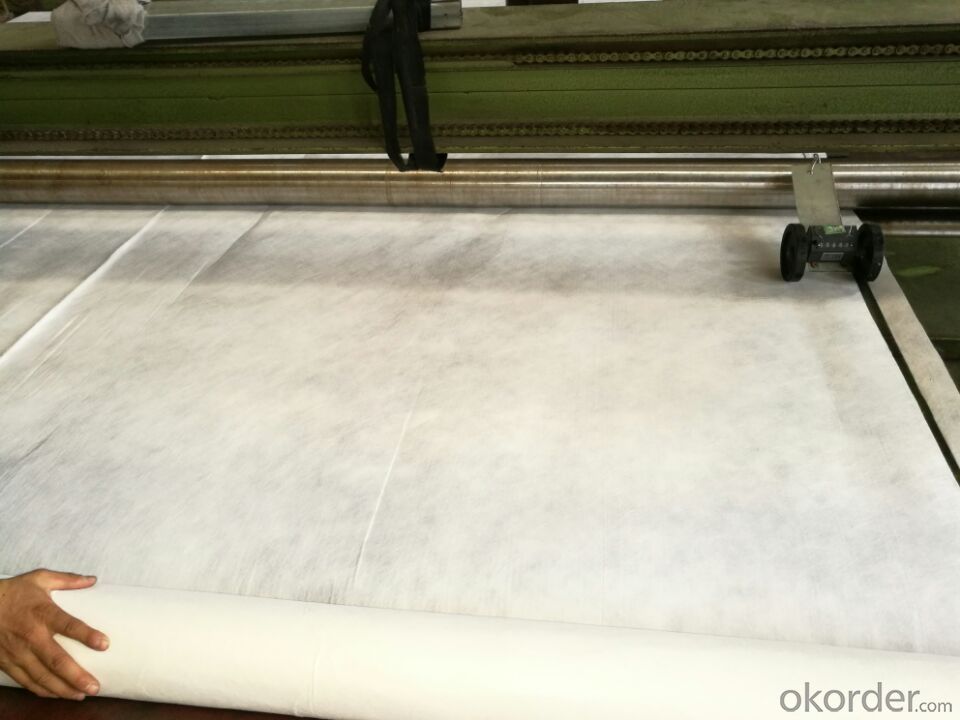
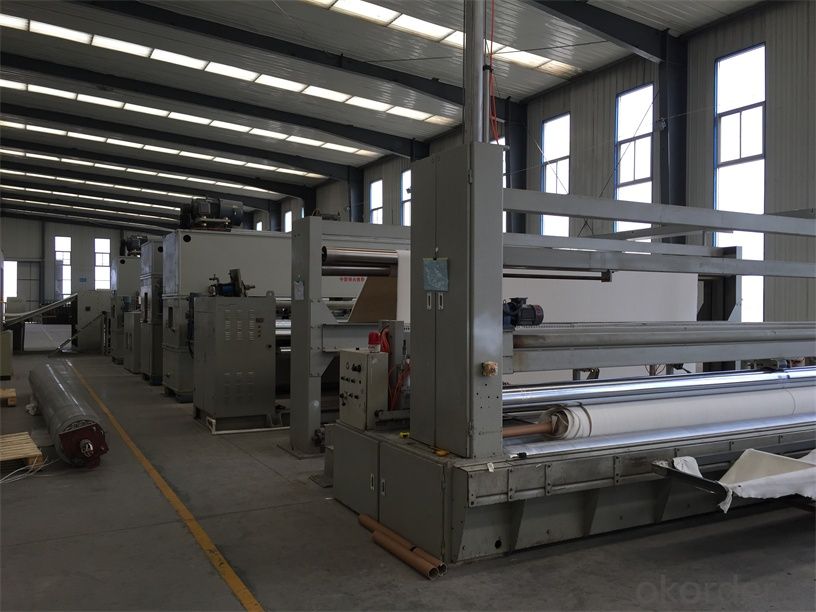
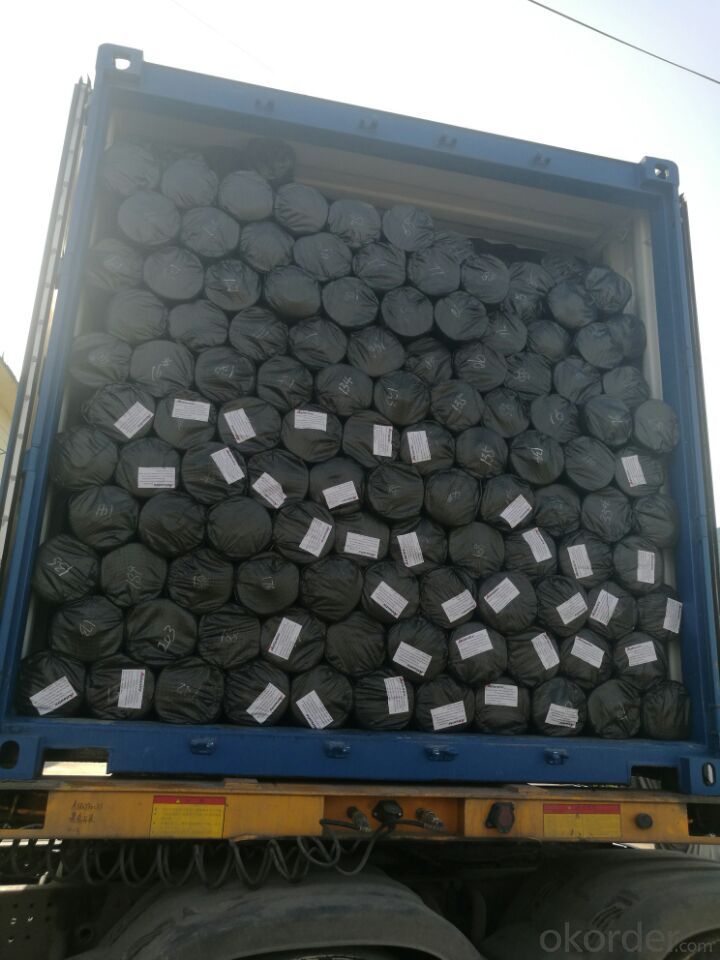

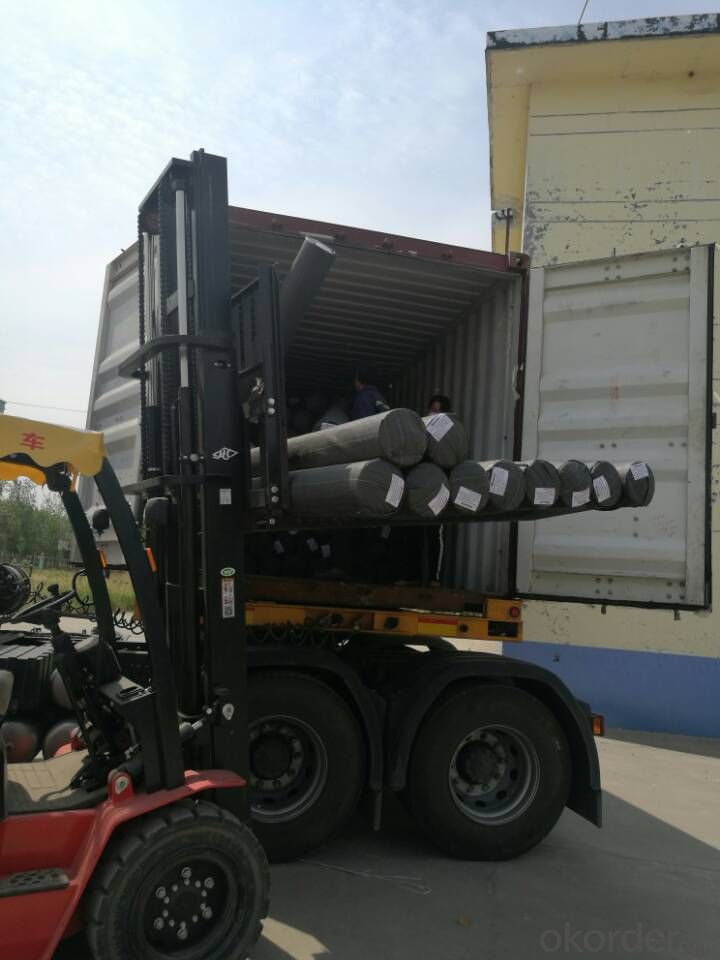
RFQ:
What is the main application of Non-woven Geotextile for River Bank Protection?
The main application of Non-woven Geotextile for River Bank Protection is as follows: The highway, railway, soil-stone dam, breakwater, airport, backfill soil of retaining wall, slope protection, etc.
Where is your main market?
Our main market is in Middle East, South America and some African countries.
What is your advantages for the S Non-woven Geotextile for River Bank Protection?
One of the largest manufacturer of Short Fiber Nonwoven Geotextile with advanced equipment, big production capacity and excellent quality.
- Q:How do geotextiles help in reducing the risk of landslides?
- Geotextiles help in reducing the risk of landslides by acting as a barrier against soil erosion. They are used to stabilize slopes and reinforce the soil, preventing it from sliding downhill. Geotextiles also allow for better drainage, which reduces the build-up of excess water in the soil, another common cause of landslides.
- Q:How do geotextiles affect noise pollution?
- Geotextiles can help reduce noise pollution by acting as a sound barrier or absorber in various applications such as road construction, landscaping, or building insulation. These specialized textile materials can help dampen sound waves, prevent their transmission, or absorb the noise, thereby minimizing the impact of noise pollution on the surrounding environment.
- Q:How do geotextiles help with erosion control in slope protection projects?
- Geotextiles are used in erosion control and slope protection projects primarily to prevent the loss of soil and promote vegetation growth. These permeable fabrics act as a barrier against water flow, reducing the speed and erosive force of runoff. By trapping sediment and stabilizing the soil, geotextiles minimize erosion, enhance slope stability, and provide a suitable environment for plant establishment, ultimately protecting slopes from further deterioration.
- Q:Can geotextiles be used in pond liner systems?
- Yes, geotextiles can be used in pond liner systems. Geotextiles are often utilized as an additional layer in pond liner systems to provide reinforcement, prevent soil erosion, and enhance the overall stability and longevity of the pond.
- Q:Do you have a geotextile bed?
- Well, geotextile material is not environmentally friendly
- Q:What are the considerations for geotextile selection in coastal engineering projects?
- When selecting geotextiles for coastal engineering projects, several factors should be considered. These include the intended application, site conditions, longevity requirements, and environmental considerations. The geotextile's strength, permeability, and durability must align with the project's specific needs to effectively control erosion, stabilize sediment, or protect against wave action. Additionally, factors such as UV resistance, resistance to biological degradation, and compatibility with other materials used in the project should be evaluated to ensure long-term success and minimize negative impacts on the coastal ecosystem.
- Q:What are the advantages of using geotextiles in green space development?
- There are several advantages to using geotextiles in green space development. Firstly, geotextiles can help with soil erosion control by stabilizing the soil and preventing its displacement. This is particularly important in areas with slopes or where heavy rainfall is common. Secondly, geotextiles can improve soil drainage, allowing excess water to pass through while retaining the necessary moisture for plant growth. This helps prevent waterlogging and promotes healthier root systems. Additionally, geotextiles act as a barrier, preventing weed growth and reducing the need for chemical herbicides. Finally, geotextiles can enhance the longevity of green spaces by providing a protective layer between the soil and other materials, such as gravel or sand, which can prevent contamination and preserve the overall quality of the space.
- Q:Geotextile drainage network and geotextile how to heat stick
- Geotextile and geotextile crimp part of the use of sewing or hot air welding. Hot air welding is the connection method of filament geotextile, that is, with the hot air gun on the connection of two pieces of cloth instantaneous high temperature heating, so that part of the molten state, and immediately use a certain external force to make it firmly together. In the case of wet (rain and snow) weather can not be hot adhesive connection, geotextile should take another method of a suture connection method, that is, with a dedicated sewing machine for two-wire suture connection, and the use of anti-chemical UV suture.
- Q:How do geotextiles contribute to soil drainage?
- Geotextiles contribute to soil drainage by allowing water to pass through them while preventing soil particles from being washed away, thus promoting efficient water flow and preventing soil erosion.
- Q:How are geotextiles affected by UV exposure?
- Geotextiles are affected by UV exposure as prolonged exposure to sunlight can cause degradation and deterioration of their materials. UV rays can weaken the fibers of geotextiles, reducing their strength and overall performance. To combat this, geotextiles are often treated with UV stabilizers or coatings to increase their resistance to UV radiation and extend their lifespan.
1. Manufacturer Overview |
|
|---|---|
| Location | |
| Year Established | |
| Annual Output Value | |
| Main Markets | |
| Company Certifications | |
2. Manufacturer Certificates |
|
|---|---|
| a) Certification Name | |
| Range | |
| Reference | |
| Validity Period | |
3. Manufacturer Capability |
|
|---|---|
| a)Trade Capacity | |
| Nearest Port | |
| Export Percentage | |
| No.of Employees in Trade Department | |
| Language Spoken: | |
| b)Factory Information | |
| Factory Size: | |
| No. of Production Lines | |
| Contract Manufacturing | |
| Product Price Range | |
Send your message to us
High Strength PP Non-woven Geotextile for River Bank Protection
- Loading Port:
- Qingdao
- Payment Terms:
- TT or LC
- Min Order Qty:
- 20000 m²
- Supply Capability:
- 1500000 m²/month
OKorder Service Pledge
OKorder Financial Service
Similar products
New products
Hot products
Related keywords
